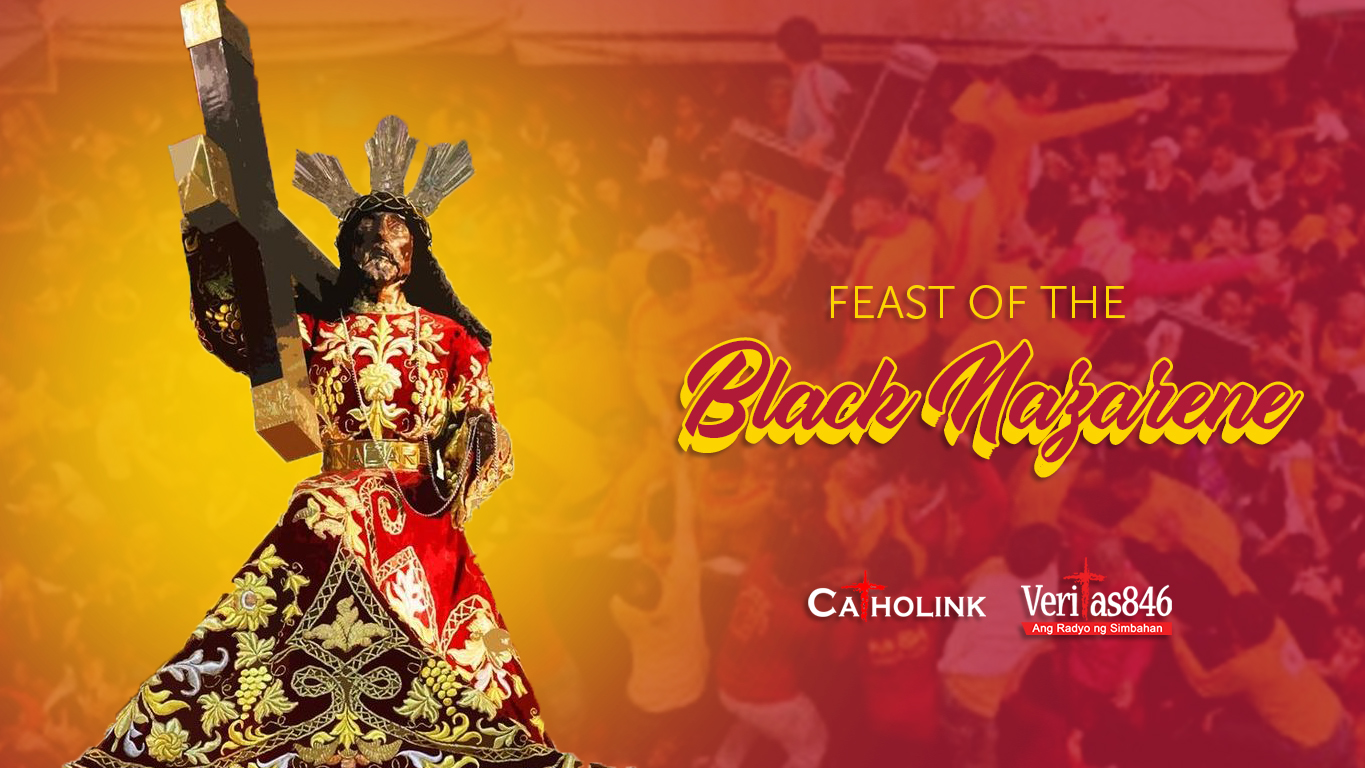Annually on the 9th of January, in observance of its feast, devotees of the Black Nazarene gather in Quiapo, Manila to journey with Jesus on His carrying of the cross. With numerous devotees flooding to reach the Nazarene’s ándas (carriage), the Traslación has been a significant religious activity deeply respected by Catholics worldwide.
The image
In 1606, the image of the Black Nazarene was brought by Augustinian Recollect Friars to the Church of San Juan Bautista in Bagumbayan (now Luneta). After 2 years, in 1608, it was transferred to San Nicolas de Tolentino, a bigger Recollect church. Its transfer to the Church of Quiapo was ordered by then Manila Archbishop, Basilio Sancho de Santas Junta y Rufina, S.P. in 1767.
Popularly called Nuestro Padre Jesus Nazareno, the statue of Christ carrying his mortifying cross has no definite origin account. The statue was said to be a work of a Mexican artist who then painted the image after his complexion, in dark brownish-mulatto color. The statue’s color turned darker with its arrival in the Philippines, thus the faithful called it the Black Nazarene.
Traslación
The Traslación or the transfer of the image of Black Nazarene done annually is an event commemorating the transfer of the image from Luneta to Quiapo.
Msgr. Jose Clemente Ignacio, previous rector and parish priest of Quiapo Church, told in an interview with the Catholic News Agency that Traslación, in a way, “is imitating the Calvary experience: the sacrifice and suffering that our Lord endured for our salvation like when Jesus was walking barefoot, carrying the cross to Mount Calvary.”
In the transfer, devotees flood by to reach the ándas and touch the image or throw cloths for the Hijos del Nazareno to wipe in the Black Nazarene.
Devotion
In Matthew 9:20-22, a woman who had been suffering from bleeding for years came up from behind and touched the cloak of Jesus believing that she would be healed in doing so. Jesus then turned and saw her; as He acknowledged her faith, she was instantly healed.
As the woman in the passage had faith in touching at least the cloak of Jesus, touching the image of Black Nazarene gives the same experience of touching the same Christ carrying the cross to save us from our sins.
The throwing of cloth to touch the Black Nazarene also gives the same Via Crucis scene of St. Veronica’s compassion for the suffering Christ, compelling her to wipe the sweat and blood on His face.
As we observe the feast of the Black Nazarene, may we have the same faith that the woman in the passage and the same compassion that St. Veronica has for Jesus. Let us have a moment to repent our sins as we witness Christ’s journey of carrying the cross of our salvation.
References:
- Quiapo Church Official Website – https://quiapochurch.com.ph/about-quiapo/history/
- Quiapo Church – St. John the Baptist Church | About Us https://www.rcam.org/quiapochurch/about/
- Understanding the fierce devotion behind the Black Nazarene https://www.catholicnewsagency.com/news/32047/understanding-the-fierce-devotion-behind-the-black-nazarene
